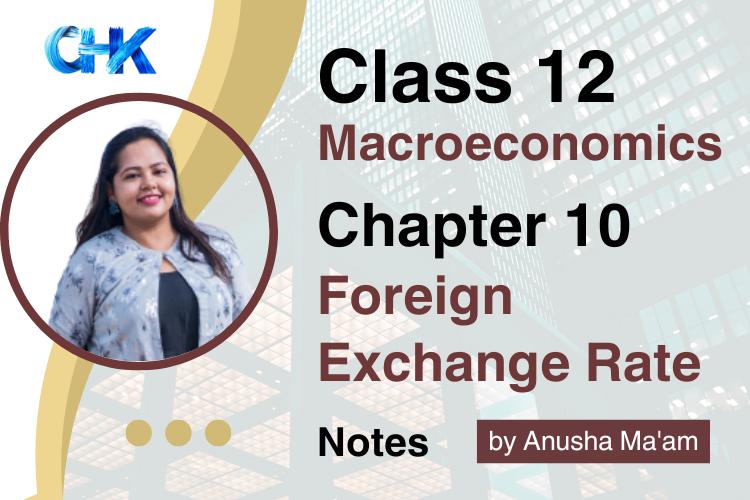
Foreign Exchange Rate Notes : CBSE Class 12 Macroeconomics
CHK CBSE Class 12 Macroeconomics Chapter 10 Foreign Exchange Rate Notes provides valuable insights into the complexities of international finance. Understanding foreign exchange rates is essential for grasping how global financial systems operate and how various factors influence currency values. From the basics of exchange rate systems to the impact on trade balances and economic stability. By mastering these concepts, students can better appreciate the interplay between currencies and their broader economic implications, paving the way for informed decision-making and analysis in the world of macroeconomics.
CHK offers the best Revision Notes to help students achieve very high test scores and reduce anxiety prior to exams. Studying commerce subjects can be challenging with the array of topics and concepts you need to master. We recognize that having reliable and easy-to-understand notes is crucial for your success. Here’s why our free notes can make a difference.
Key Takeaways
- Meaning of Foreign Exchange Rate
- System of Exchange Rate – Fixed and Flexible
- Manged Floating
CBSE Class 12 Macroeconomics Foreign Exchange Rate Notes PDF Download
The goal of the Macroeconomics Chapter 10 Foreign Exchange Rate Notes PDF is to aid students in their exam preparation and help them ace it. Notes are available for students to download for free in PDF format.

Click here to Download CBSE Class 12 Macroeconomics Chapter 10 Foreign Exchange Rate Notes PDF
Also Download Free – CBSE Class 12 IED Chapter 2 INDIAN ECONOMY 1950–1990 Notes PDF
FAQ
1. What is a foreign exchange rate?
A foreign exchange rate is the price at which one currency can be exchanged for another. It determines how much one currency is worth relative to another currency and is crucial for international trade and financial transactions.
2. What are the main types of exchange rate systems?
- Floating Exchange Rate: The currency’s value is determined by market forces of supply and demand without direct government or central bank intervention.
- Fixed Exchange Rate: The currency’s value is pegged to another major currency or a basket of currencies. The central bank maintains the fixed rate by buying or selling its own currency in the foreign exchange market.
- Managed Floating Exchange Rate: Also known as a “dirty float,” this system allows the currency to fluctuate based on market forces but includes occasional interventions by the central bank to stabilize or influence the rate.
3. Where Can I Find Additional Resources on Macroeconomics?
- Textbooks: Refer to your Class 12 Macroeconomics textbook for detailed explanations and examples.
- Educational Websites: Website like ours comerc.in or apps like CHK Commerce Classes, offer useful resources.
- Class Notes: Review your class notes and materials provided by your teacher for specific details related to your syllabus.
4. How should I prepare for exams using these notes?
- Review Regularly: Go over your notes frequently to reinforce your understanding.
- Practice Questions: Solve past exam papers and sample questions related to this Chapter.
- Teach Concepts: Explain the concepts to peers or family members to test your understanding.
- Make Summary Sheets: Create quick reference sheets for last-minute revisions.
For study material related to Economics Class 12, students can visit the CHK app or website.
for more information contact us –
Ph. No. – +91-6367885579
WhatsApp – Click to chat
facebook – @commercehubkota
Instagram – @comerc_classes
Youtube – @commercehubkota
Telegram – @comerc.in



